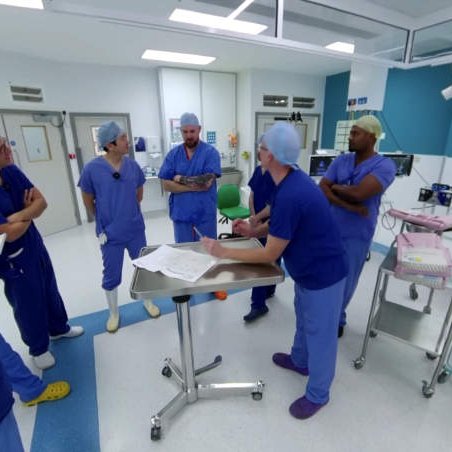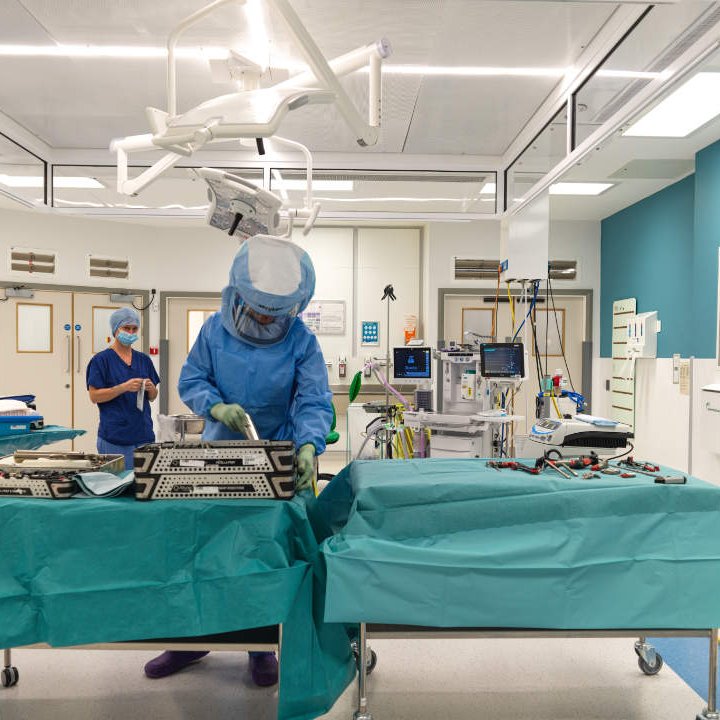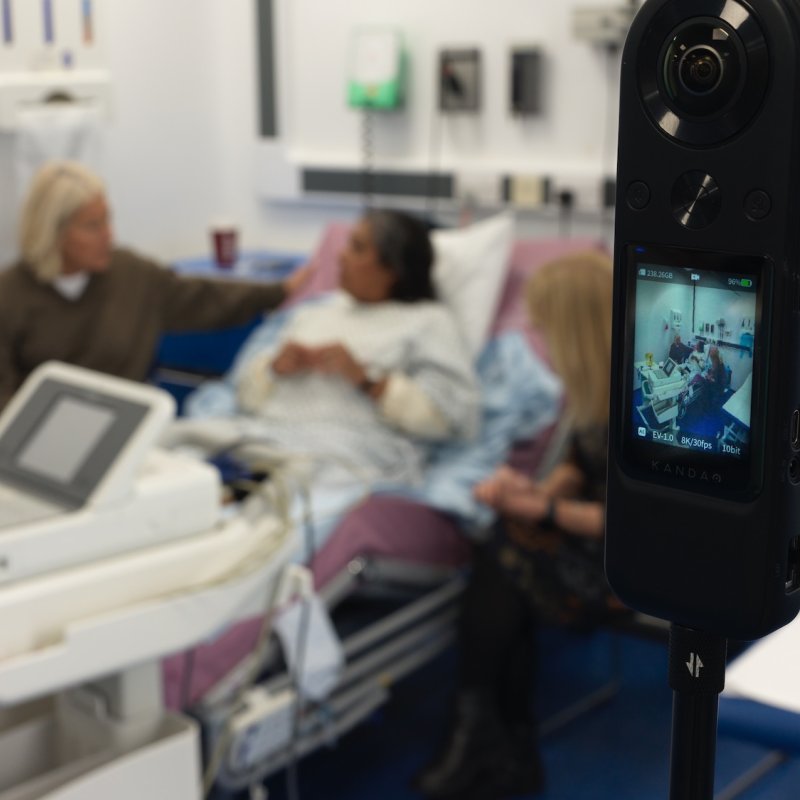Contact Us
+44 20 32897141 / 1 Pickle Mews, London, SW9 0FJ
The Brief
After sourcing VR equipment from RedBoxVR, The Robert Jones and Agnes Hunt Orthopaedic Hospital were recommended to use ExR for their specialist content creation that would be supported by their new VR devices. RJAH was seeking immersive teaching content dedicated to orthopaedic surgery. The purpose of this 360°VR content was to leverage internal expertise and distribute training across new team members to improve learning outcomes.
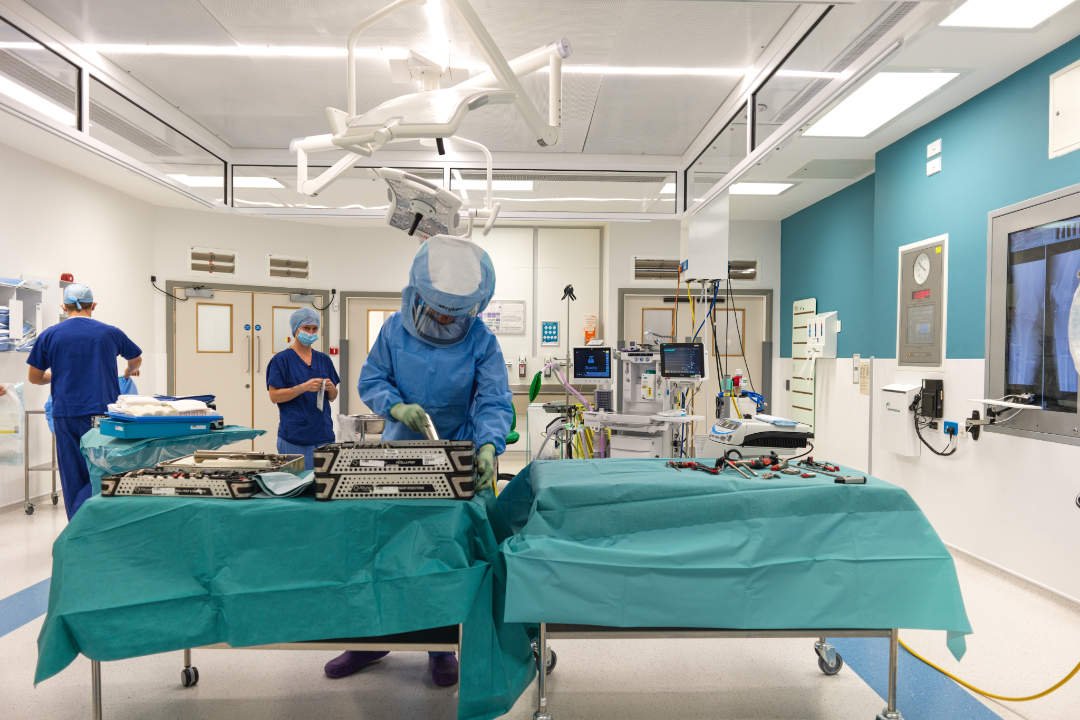
Maximising Education Material
The Robert Jones and Agnes Hunt Orthopaedic Hospital requested their ATTUNE total knee replacement surgery to be filmed and transformed into a simulated learning experience that would give clinical staff the feeling of being right there in the room.
Converting to this method of training enables clinical staff to boost competency surrounding the medical equipment and how it should be used in a real-world, safe environment. All of which would be available on-demand, meaning minimal need to pull clinical staff away from their core duties to provide training.
Capturing The Surgery
Alice Amyes organised internally with the theatre practice development team and relayed the plan. She arranged the surgeon and scrub team to film the orthopaedic surgery, and co-ordinated with us to book an appropriate date for filming. In addition, Alice has prepared key documentation, such as patient and staff consent forms.
Our Managing Director, and production specialist Nick arrived ahead of time to meet the theatre staff and setup the remotely operated camera equipment. The utilisation of remotely operated cameras means that filming does not interfere with standard hospital practices. As part of this stage, consent forms are distributed to all of those involved. The first step of the filming captures the team briefing and procedure setup. The careful placement of cameras meant that no identifiable information was captured, and any mention of the patient's name was censored out in the editing stage. Equipment remained outside of the sterile field, which given the brief for this project (capturing the choreography of the theatre for use in scrub-nurse training) was more than sufficient.
The 360° camera was positioned to provide a view of the scrub nurse setup. To capture communication throughout, microphones were placed on the scrub nurse and surgeon so that both voices could be clearly heard. The remote camera, position at the sides of the room were able to capture detailed alternative angles to provide views not achievable for those not scrubbed and wearing sterile PPE.
Elevating Surgical Training
Whilst the surgery was filmed as one full experience, it was broken down into shorter films for specialised topic areas, such as:
- The safety huddle
- Setting up medical equipment
- Knife to skin
This approach enabled more flexibility in the learning process, allowing the learner to watch the full operation from start to finish or to select the specific areas of learning that they’d like to dedicate attention to.
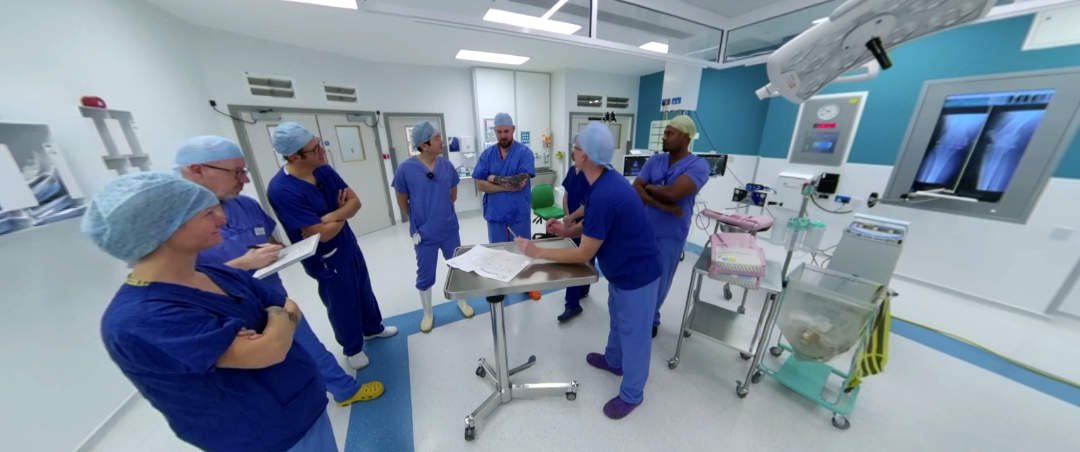
Building Immersive Surgical VR Training
The content is primarily intended to be used with VR headsets to give users that truly immersive experience. It will engross them with a 360° view of the operating theatre, providing them the experience of being right there in the operating room, moving and interacting with the scenario. However, to align with our core value of democratising access to immersive healthcare training, the video can still be viewed on other devices such as a monitor or tablet to ensure accessibility across not only Angus Hunt Hospital, but also wider NHS users (who can freely access the content on the ExR platform).
As improving learning outcomes was a core objective of this surgical VR training, we chose to intertwine interactive questions after each clip to boost engagement amongst users and consolidate the learning process.
Obtaining Footage
The procedure was shot on a single 360° camera with two additional cinema camera angles. The non 360° images are placed within the VR spherical projection and moved into a position allowing the viewer to see the additional angles without them getting in the way of experiencing the choreography of the theatre. The footage is exported in 8K, which provides enough quality per-eye when viewed in 360° projection. This is then encoded, optimising the content for the multiple devices that the ExR platform supports.
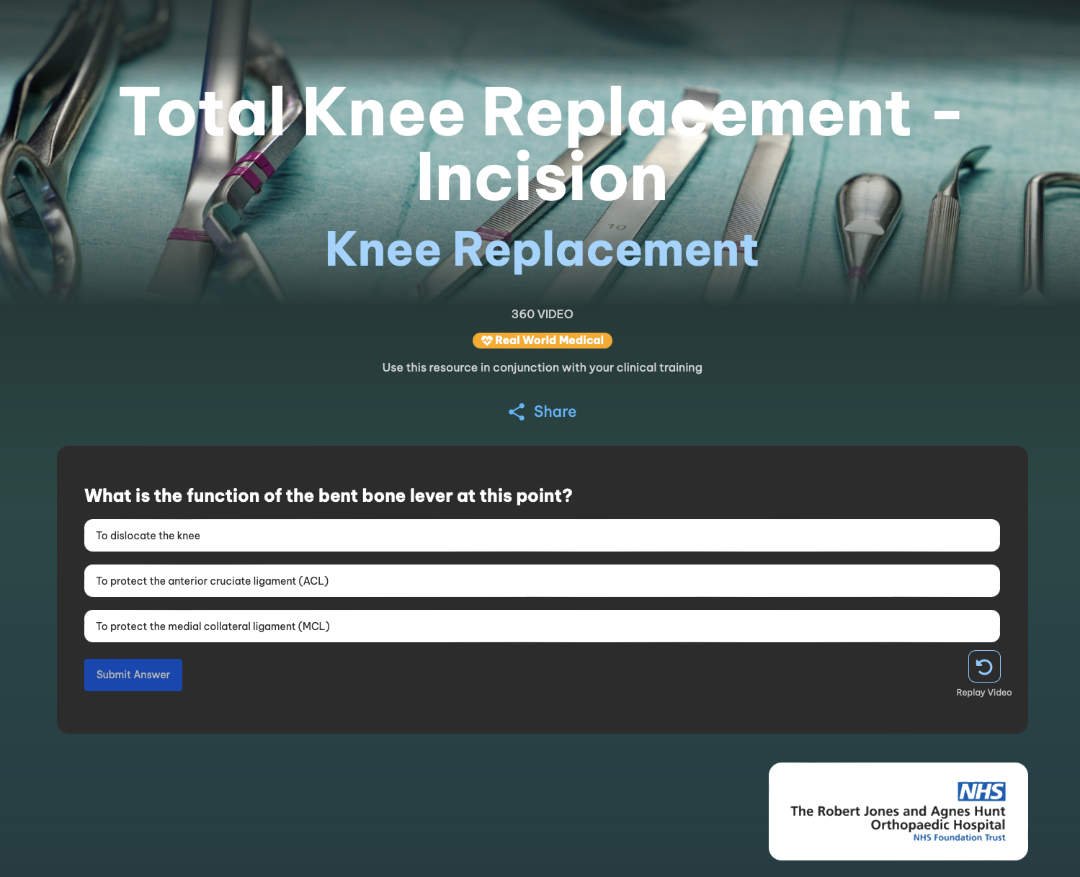
Intertwining Interaction
Whilst creating the immersive tasks on the platform multiple choice questions are added using the platform admin tools. The system validates the answer and correctly displays the question and possible answers on all devices which access the platform. Logic is applied to the possible answers, dictating the outcome of the user's choice. For example, move to the next clip or replay the previous.
Rapid Timeframe
The first edit of the procedure was sent in a private review link on the platform the day after the recording. This allowed the education staff at the hospital to make comments and suggestions, particularly where we might split the long clip into shorter clips. The review link allows reviewers to watch the clips on headsets or flat screens so that at every step of the process the final user experience can be experienced by the approval team. We were able to have an approved, cut-down version available on the platform within a week of the recording.
The Final Film
The 60 minute operation was segmented and shortened into eight clips, each with their own dedicated learning outcomes. The total footage time being 30 minutes. After each short section film, a question appears, whether the user is viewing on a headset or a flat-screen device. Only the correct answer enables them to progress to the next clip in the series, ensuring knowledge retention and critical learning. An incorrect answer will lead the user to be as to rewatch the clip and try again to build a stronger understanding of the task.
ExR facilitate educators to create learning experiences, but the knowledge and learning continues to be delivered by the experts. The hospital staff review the film and choose the appropriate questions to be asked for each clip.
Testimonial
“The ExR process was very good and easy to follow, with full support provided by Nick Culley. On the day, Nick arrived with plenty of time to get equipment set up and talk through the process with the team being filmed. The content was then edited rapidly and we were able to review and fine-tune it to meet our training needs. It was not made public until we were happy with the end result.
Following the introduction that was made, we as a Trust were impressed with the content that was already available to us, and the willingness to produce content without the need for payment made it easy to get approval from senior managers.
The learners who have so far seen the content have all said they have found it very useful as a learning tool and feel better prepared to enter the theatres for real. Other more senior staff also appreciate is as a tool to use. It has allowed us to give VR headsets an excellent introduction into the Trust as a training resource.”
Alice Amyes, Simulation Technician
Have A Project In Mind?
Whether you are looking to create VR experiences for emergency procedures or film a specialist surgery to scale training in your Trust, ExR can co-create content with NHS Trusts for free.
Want to join in?
Please type us a message.
